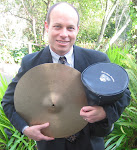"A Portrait of Marin," produced by the American Human Development Project, an extension of the nonprofit Social Science Research Council, draws distinctions between towns such as Ross and Tiburon — where residents enjoy long lives, high incomes, extensive educations and access to healthy foods — and those such as the Canal area of San Rafael, which the report compares to rural West Virginia.I've been to West Virginia; I spent a week outside Morgantown, and the comparison is patently ridiculous. In many areas of West Virginia poor unemployed whites live in houses on rolling green hills outside a small town or in rural coal-mining areas. There isn't a bustling city close by. In the Canal, Mexican immigrants live in high density apartments a mile from downtown San Rafael, Whole Foods, Safeway, farmers markets, Dominican University of California, bookstores, music shops, and art stores. West Virginian life at its worst resembles characterizations from Steinbeck's The Grapes of Wrath (West Virginia taking the place of Oklahoma), a generational cycle of poverty and few opportunities for betterment. In comparison, life in the Canal boasts of all the opportunities small city life has to offer--good schools, and plenty of job opportunities. Most people that live in the Canal haven't lived in the country for long and certainly for less than a generation. Just about everyone is working.
Certainly there is great income inequality between rich neighborhoods such as Ross and the Canal.
According to the report, the top fifth of Marin's taxpayers earn about 71 percent of the county's total income, while the bottom fifth earns only 1.3 percent — and life for those bottom-earners is extraordinarily stressful, the report suggests.Last time I saw my specialist, he charged me $500 for 10 minutes of his time. My lawyer charged me $450/hour and my accountant half that. It's true. Canal bricklayers are not in the one percent and don't make that kind of money.
"It's no surprise to me that the population of the Canal neighborhood would be rated way below that of Ross," said Tom Wilson, director of the Canal Alliance, which serves Marin's low-income immigrant populations. "It's not only an immigrant community, but a self-selected group of immigrants: people who came here because they were fleeing oppression, poverty, war and any number of other traumatic events. And about half that population are indigenous peoples, who might speak Spanish as a second language or not at all. It's a unique group."Anyone with a pulse knows that poor Mexican immigrants wait on Canal neighborhood street corners for work and provide cheap labor for anyone willing to pay. May we mention what the Marin IJ and the director of the Canal Alliance refuses to say: the Canal has more than its share of illegal immigrants that came here for a better life. As bad as life as an uneducated laborer is in the Canal, it's way better than that of an uneducated laborer in Mexico.
The article states that less than half of the Canal residents received a high school diploma. If you never finished high school, speak little English, and have an undocumented status, it is likely that your earnings will place you in the bottom fifth in the United States, whether you live in Marin or Los Angeles. The answer to the problem lies in a rational immigration policy and in education. (See my previous blog on education as a weapon against poverty here.)





No comments:
Post a Comment